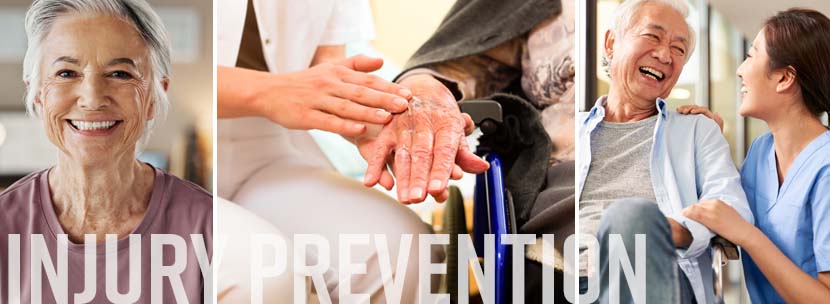 December 18th, 2025
December 18th, 2025

How We Protect Fragile Skin and Prevent Skin Tears in Senior Living
Why Skin Integrity Matters in Senior Care
At American House, our highly trained team members diligently maintain wellness protocols that include preventing injuries that commonly occur with older adults. Among the most frequent are skin tears—painful wounds that can significantly impact quality of life by compromising skin integrity and increasing the risk of infection. That’s why careful monitoring by informed team members and caregivers is essential to protecting fragile skin in the elderly.
Common Locations of Skin Tears
Skin tears typically occur on areas where the skin is thinnest, such as arms, hands and lower legs. According to Wounds International, these regions are particularly vulnerable during activities like bed-to-chair transfers, dressing changes or routine daily movement. When skin integrity is compromised, even gentle friction can lead to tears.
Causes of Skin Tears
As noted by the National Institutes of Health (NIH), aging skin becomes thinner and loses elasticity, making it more susceptible to injury from:
- Accidental bumps or falls
- Friction from linens, clothing or mobility aids
- Improper removal of adhesives or bandages
- Nutritional deficiencies and dehydration
Knowing these risks helps inform the training and care protocols to of American House team members to minimize injury and support healing.
Top Risk Factors for Skin Damage in Seniors
Several factors contribute to skin integrity impairment in aging adults (Mayo Clinic).
- Aging and chronic illness: Reduced elasticity and poor circulation affect skin resilience in older adults.
- Cognitive decline: Some residents may resist care or move unexpectedly.
- Limited mobility: Friction on the skin increases when a person has difficulty moving or changing positions independently.
- Environmental factors: Dry indoor air and improper bedding can promote skin fragility.
Being proactive about these risk factors is key to maintaining healthy skin.
Daily Skin Tear Prevention and Caregiver Best Practices
Preventing skin tears in older adults begins with daily, thoughtful care. The Mayo Clinicoutlines several key preventive actions:
- Keep skin moisturized to maintain flexibility and reduce dryness.
- Dress residents in long sleeves or shin guards during transfers.
- Ensure all team members are educated on skin tear prevention protocols.
- Provide hydration and balanced meals that support skin integrity.
- Avoid harsh soaps or alcohol-based products that dry the skin.
These everyday efforts help our residents stay comfortable and confident while receiving the care they need.
Safe Transfers: Minimizing Risk During Movement
Transfers are one of the most common times when fragile skin is injured. At American House, we emphasize gentle, safety-first mobility and thorough team training to minimize harm. Using the NIH as a guide, American House team members are fully trained in:
- Safe use of gait belts, lifts and transfer boards
- Two-person assist protocols for higher-risk residents
- Recognizing early signs of skin integrity impairment during movement
By prioritizing safe mobility, we protect our residents' skin and promote independence.
Smart Use of Adhesives and Dressings
Bandages and adhesives and dressings can cause skin damage or trauma if applied or removed improperly. At American House, we adhere to the following practices:
- Utilize gentle, silicone-based adhesives
- Use adhesive-remover products when needed
- Minimize the use of tape and opt for soft or non-stick dressings
These best practices align with guidelines from Wounds International and help in protecting our residents during wound care.
How We Monitor, Document and Improve Care
At American House, our teams are rigorous in documenting, reporting and monitoring our residents’ injuries. Our process includes:
- Immediate reporting to clinical leadership
- Review of contributing factors
- Ongoing monitoring and communication with the care team
This level of detail and attentiveness helps to improve our protocols and prioritize skin tear prevention efforts.
Our Commitment to Skin Health and Resident Safety
At American House, we understand the importance of protecting fragile skin as part of comprehensive senior care. From skin tear prevention to gentle wound care and informed staff training, we go above and beyond to ensure our residents feel safe, supported, and cared for every day.
Learn more about our commitment to our residents’ safety and skin health. Find an American House community near you and schedule a visit!

More to read
Let’s find your community
Maintaining a home and your health can become a challenge as you age. American House provides the care, amenities and services that make life easier. Find out how American House can help you live life to its fullest.



